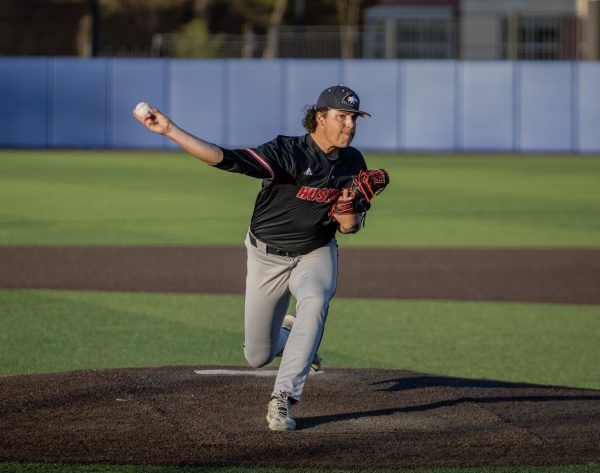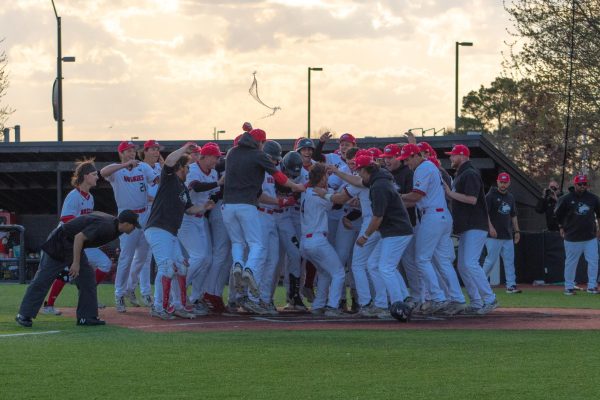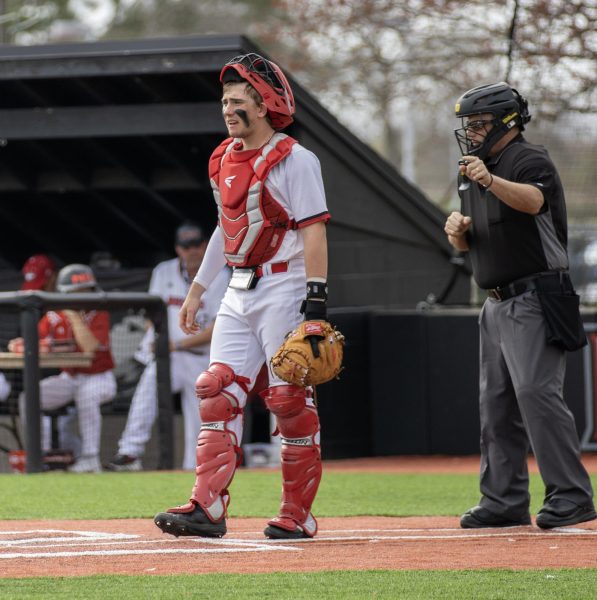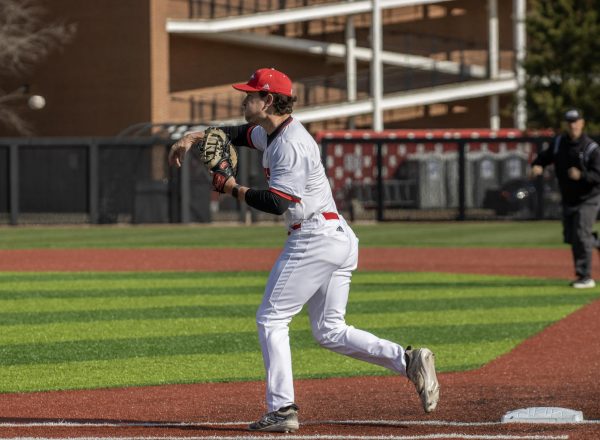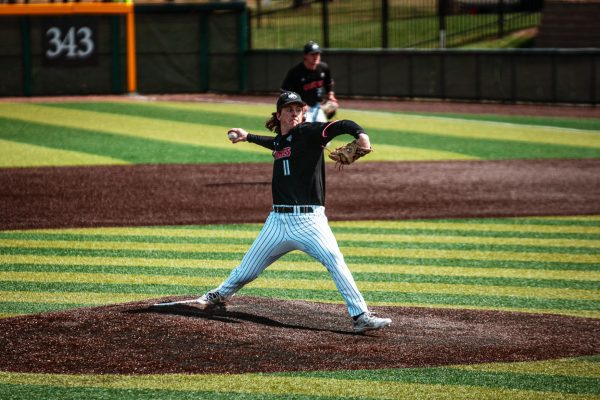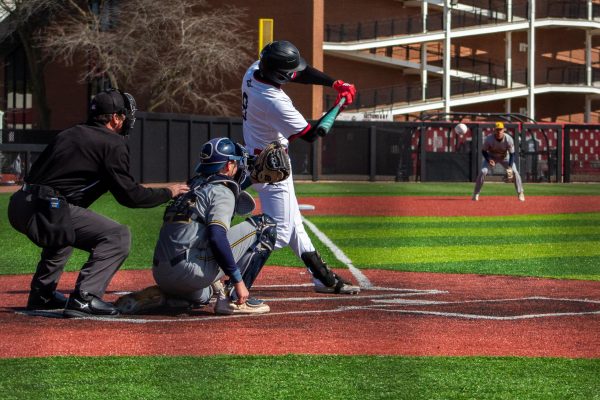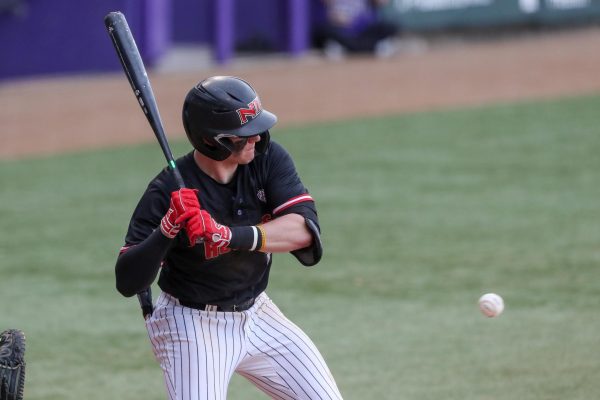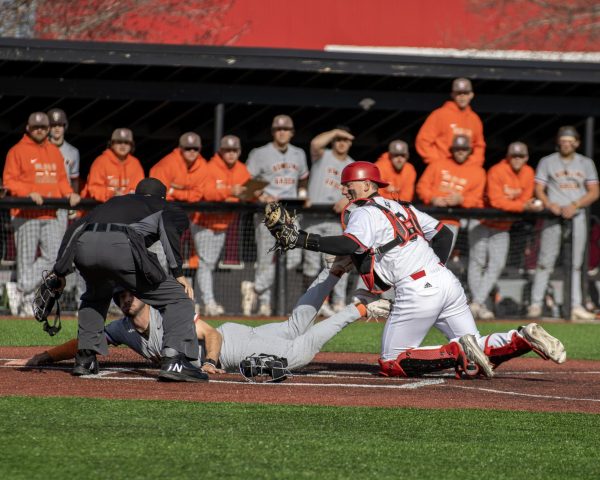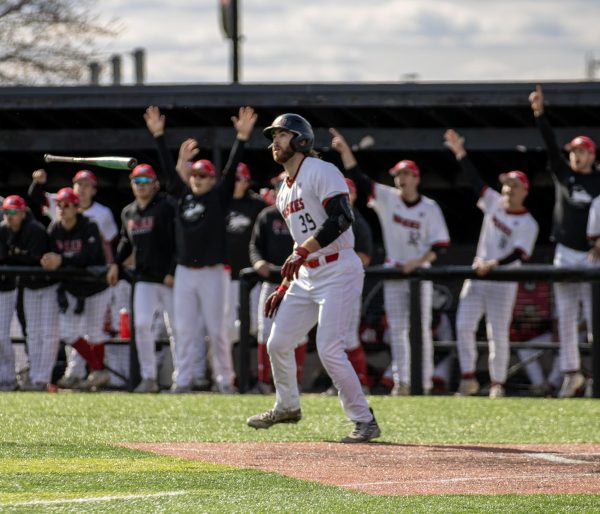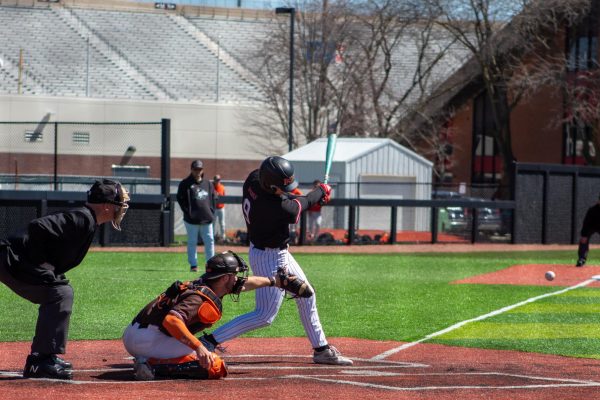Muscle and joint strain, recovery periods among differences between softball and baseball pitchers
April 9, 2009
Softball’s biggest advantage is baseball’s curse.
The role of the pitcher in both sports is a vital component to winning, but it’s the use of that component which separates the sports.
The difference in style is obvious: softball pitchers throw underhand on a flat surface while baseball pitchers throw overhand from an elevated mound.
But why is it that freshman Morgan Bittner can pitch in two games of a doubleheader, throwing seven innings in one and one-and-one-third in the second? And why is it after freshman Tom Barry throws five innings, he’s relegated to a strict recovery period that won’t let him start in a game for at least five days?
According to Chris Hubbard, an anatomist and associate professor in the department of biological sciences at NIU, the stability of the arm in the underhand throw puts less strain on rotator cuff muscles and shoulder and elbow joints.
“When [the ball] is by your side, like in the underhand pitch, that’s pretty stable, and the muscles you’re using to do it are fairly strong,” Hubbard said. “When you’re doing an overhand pitch, your forearm is up in the air, so you’re going to be rotating the arm in the socket over the top and you got your arm straight out from your side, so that’s pretty unstable.”
This would explain why NIU’s softball team has only three pitchers who have compiled significant
innings. In the last baseball game alone, a win over Wisconsin-Milwaukee, the Huskies used five pitchers.
And therein lies the biggest difference.
“Softball is dominated usually by one pitcher,” said Lindsay Chouinard, NIU head softball coach. “Usually, the people who win the national championship have one good pitcher. The whole idea of a staff — it’s still helpful, but it’s not as appropriate in our sport as baseball.”
The recovery period for both softball pitchers and baseball pitchers differ greatly too. Softball starting pitchers will sometimes ice their arms and rest but can pitch the next day and usually do.
Ed Mathey’s starting baseball staff has a systematic recovery period that lasts five days, with pitchers increasing their throwing each day. During that time they will devote a day for taking a breather, playing long toss from 150 to 200 feet, throwing a light bullpen session and then another day of light long toss and flat-ground pitching. Then they can pitch again.
So what would Mathey do if he had the advantage that Chouinard does with her pitchers?
“There was a time that guys threw every day,” Mathey said. “Look at Cy Young. He had 500 career victories and started 80-90 times a year. I don’t think they threw with the same intensity that pitchers do today. But it would definitely change the game if pitchers could do that today.”


